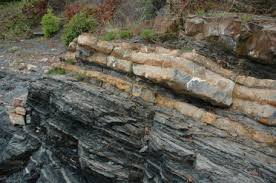Shale Gas:

A recent study by scientists from Birbal Sahni Institution of Palaeosciences, Lucknow (BSIP) indicated significant shale gas generation potential in the eastern South Karanpura coalfield in the Ramgarh district of Jharkhand.
- Shale gas is natural gas found in shale deposits, where it is trapped in microscopic or submicroscopic pores.
- This natural gas is a mixture of naturally occurring hydrocarbon gases produced from the decomposition of organic matter (plant and animal remains).
- Typically, shale gas consists of 70 to 90 per cent methane (CH4), the main hydrocarbon target for exploration companies.
- It is extracted by a commonly known method called Hydraulic fracturing.
- In this method deep holes are drilled down into the shale rock, followed by horizontal drilling to access more of the gas, as shale reserves are typically distributed horizontally rather than vertically.
- Fracking fluids containing sand, water and chemicals are then pumped at high pressure into the drilled holes to open up fractures in the rock, enabling the trapped gas to flow into collection wells. From there it is piped away for commercial use.
- India holds promising reserves of Shale Gas & Oil resources and the following sedimentary basins are considered prospective from a Shale oil and gas point of view:
- Cambay Basin, Gondwana Basin, KG Basin, Cauvery Basin, Indo-Gangetic Basin and Assam & Assam-Arakan Basin
- This is the gas used for generating electricity and for domestic heating and cooking.




